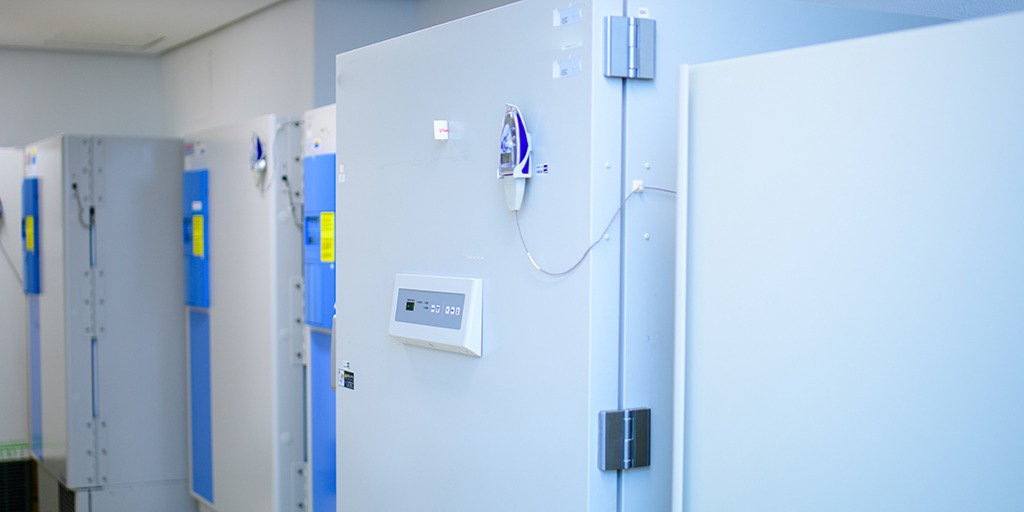NIEHS efforts to store research samples more sustainably helped the National Institutes of Health (NIH) win the Top Government Organization Award in the 2021 for the second year in a row. The Freezer Challenge is a cold storage competition for laboratories, and it is run by My Green Lab and the International Institute for Sustainable Laboratories, both of which are nonprofit organizations.
NIH participation in the challenge saved an estimated 535,000 kilowatt-hours (kWh) per year, which is roughly equivalent to the annual electricity use of 45 U.S. households. Half of those savings were due to efforts undertaken at NIEHS.
“The Freezer Challenge has been a great opportunity for NIEHS to demonstrate our commitment to energy conservation, sustainability, and environmental stewardship, and to lead by example,” said NIEHS Sustainability Coordinator Kerri Hartung.
 Hartung has led sustainability efforts at NIEHS since February 2020. (Photo courtesy of Steve McCaw / NIEHS)
Hartung has led sustainability efforts at NIEHS since February 2020. (Photo courtesy of Steve McCaw / NIEHS)“While environment and health are at the core of who we are as an institute, sustainability is a guiding principle for all of NIH,” she added.
The cost of cold
Freezers are among the biggest users of electricity in the lab. Hartung said the most impactful measure the institute has taken to cut back on energy use is to systematically replace older freezers with Energy Star certified units.
A new Energy Star ultracold temperature (ULT) freezer uses approximately a quarter of the energy of the oldest ULTs previously in operation at NIEHS. Many of those upgrades took place during the 2021 freezer challenge.
In addition to the freezer upgrades across the institute, the following individuals in NIEHS labs participated in the challenge by maintaining searchable sample inventories, disposing of unneeded samples, defrosting freezers, and sharing freezer space.
- Lisa Padilla-Banks, from the Reproductive and Developmental Biology Laboratory, Reproductive Medicine Group, led by Carmen Williams, M.D., Ph.D.
- Amy Papaneri, In Vivo Neurobiology Lab, led by Guohong Cui, M.D., Ph.D.
- Tanya Whiteside(https://tools.niehs.nih.gov/staff//detail/0010388259), Quality Assurance Lab, Comparative Medicine Branch, led by David Kurtz, D.V.M., Ph.D.
Padilla-Banks said her lab incorporated a logbook for their freezer. They record what types of samples and reagents are stored, their locations in the freezer, and to whom they belong. Lab members also put a map of the freezer space on the door with each person’s name assigned to each section. She said the method has greatly reduced the amount of time researchers spend looking for samples and has reduced energy waste.
In addition, creating this sample and reagent inventory has significantly enhanced their science by decreasing the number of unnecessary tissue collections and reagent purchases.
“Winning the Government Organization Award was just icing on the cake,” she said. “We were happy to participate in an effort that has a far-reaching impact on our environment. Every little bit counts.”
(Marla Broadfoot, Ph.D., is a contract writer for the NIEHS Office of Communications and Public Liaison.)
Source link
factor.niehs.nih.gov

